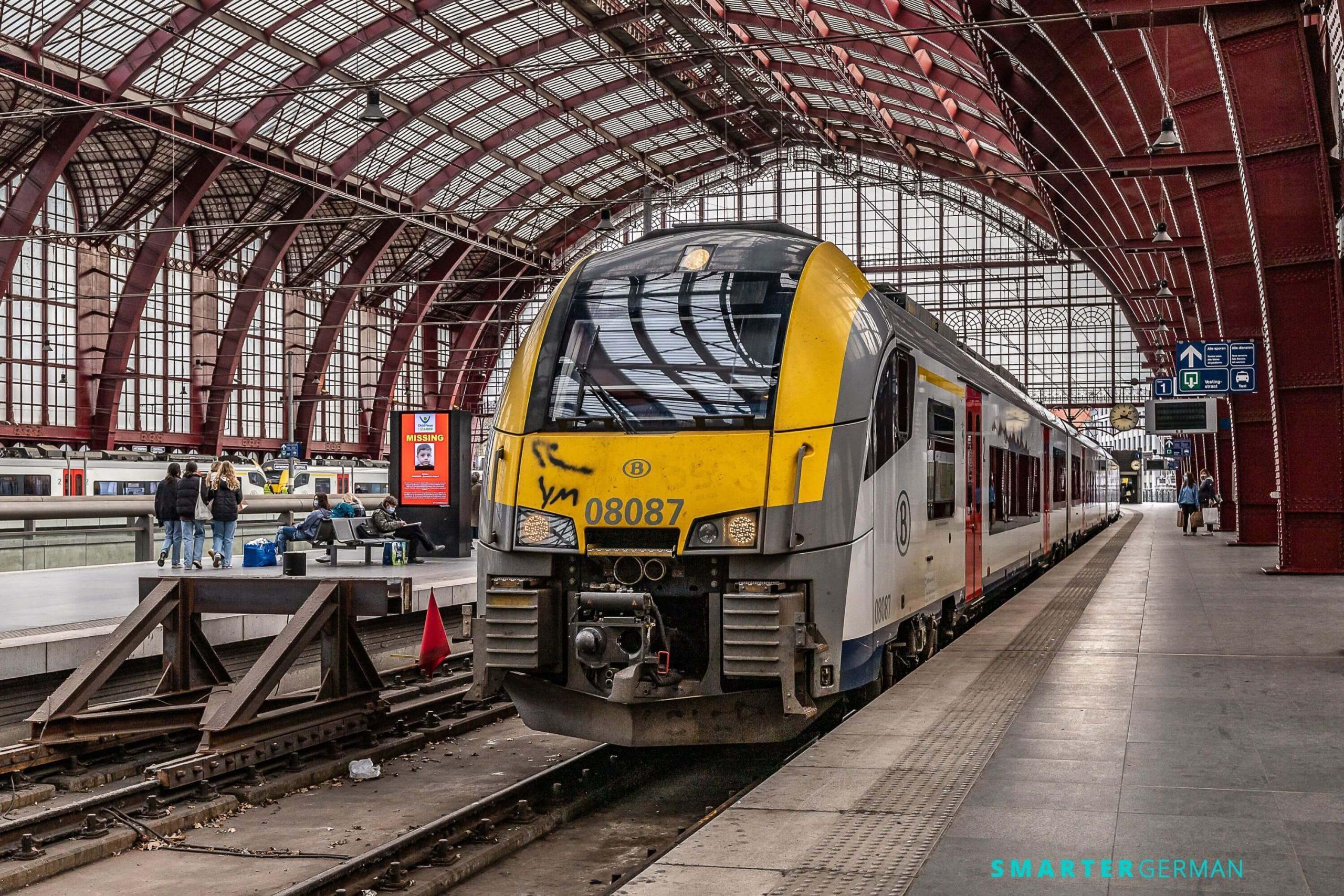In genereal the train network in Germany is very good. It will get you to most places in the country in relative comfort. As long as nothing goes wrong, using the German train system is pretty easy, even if you don’t have any German language skills yet. But when something DOES go wrong, that’s when you are going to need some vocab … and some serious reading and listening skills. All those preaching drills with smartergerman suddenly become lifelines.
Most of the time, nothing goes wrong.
But more of this later…
Successfully Using the German Train System
First, the basics: there are three levels to the German rail network; the U-bahn, which is like the subway, but also includes the light rail networks in cities and major towns, that go slower but have very frequent stops; there’s the S-bahn, which are your standard commuter-type trains, that will run you into the city from outlying suburbs or from city to city on a small scale; and then there are the ICE trains that run the length of the country and beyond, and do around 230 km/h on a good day.
The actual ticketing system is pretty darn complex, and gives some Germans a headache, let alone language learners. The Deutsche-Bahn app is the way to go, generally. You can have it in English, put in your destination etc and it will give you the ticket options.
However, for a trip across states, it gets a little messy, particularly if you need to change trains, which is quite common. You might need to go U-bahn to S-bahn to ICE and back again … all depending on the vagaries of the network and where you want to be. It just so happened we wanted to be in Lower Saxony (aka Niedersachsen), Hameln, one fine sunny day in late May.

We thought we were already pretty experienced with using the German train system as we had pre-booked a ticked which took us on two different S-bahns and an ICE. The first leg: to Essen went fine, an almost-empty single-storey S-bahn carriage took us through the lush green and sparkling lakes of the region come back to life from Winter. But, in Essen (a concrete and foreboding town) a message appeared on the screen I could not read, and my friendly-fluent German also found confusing. The app also seemed confused. The train seemed cancelled, but also not cancelled.
Fortunately, the Deutsche-Bahn has an information office downstairs at Essen, and a lively discussion ensued. It turns out the train was not ‘technically’ cancelled, but just that it was skipping stations, one of which being the connection we required. But it was important that we realised that this was not a cancellation … per se.
You can imagine our relief.
Embracing Change – Umsteigen Bitte
Another route was organised through the ever-faithful Deutsche-Bahn computer that meant we had to change four more times due to the not-cancelled train. And we had to get to a Hogwarts-like hidden platform somewhere down the street. And we had four minutes to get there. Nothing trains you better for using the German train system on your own than a journey like this.
Laden down with the luggage, we march down the side of the road looking for the Hogwarts platform, only to further find there are road-works going on and no footpath available. A small cadre of bemused commuters and hangers-on make a charge for the platform anyway, and a bus honks us down brutally before we manage to scurry out of its path, dodging the rubble and the eight foot high portable fencing. We struggle up the stairs, and make it with a minute to spare.
But we’re only on that train for eight minutes.
Ende Gut – Alles Gut?
We connect back and forward a few times then to get across the network. And there’s one train you had to make sure you were on the right carriage because one half ended up going somewhere else. The beautiful farmland and forests of Lower Saxony are worth the admission, at least. We see two eagles flying, scanning for game; and one bright-orange fox roaming through a huge grassy field, as bold as brass in the middle of the day. Eventually, we get to Hameln, and to the River Weser, deep and wide, and while we aren’t quite the rats of Pied Piper lore, we maybe know how they feel. But on a lighter note, I must say that after this journey in I feel more confident about using the German train system in the future.
Oh, and in case you would like to be able using the German train system with more easy yourself, why don’t you check out our online German courses? You can try them all for free.

